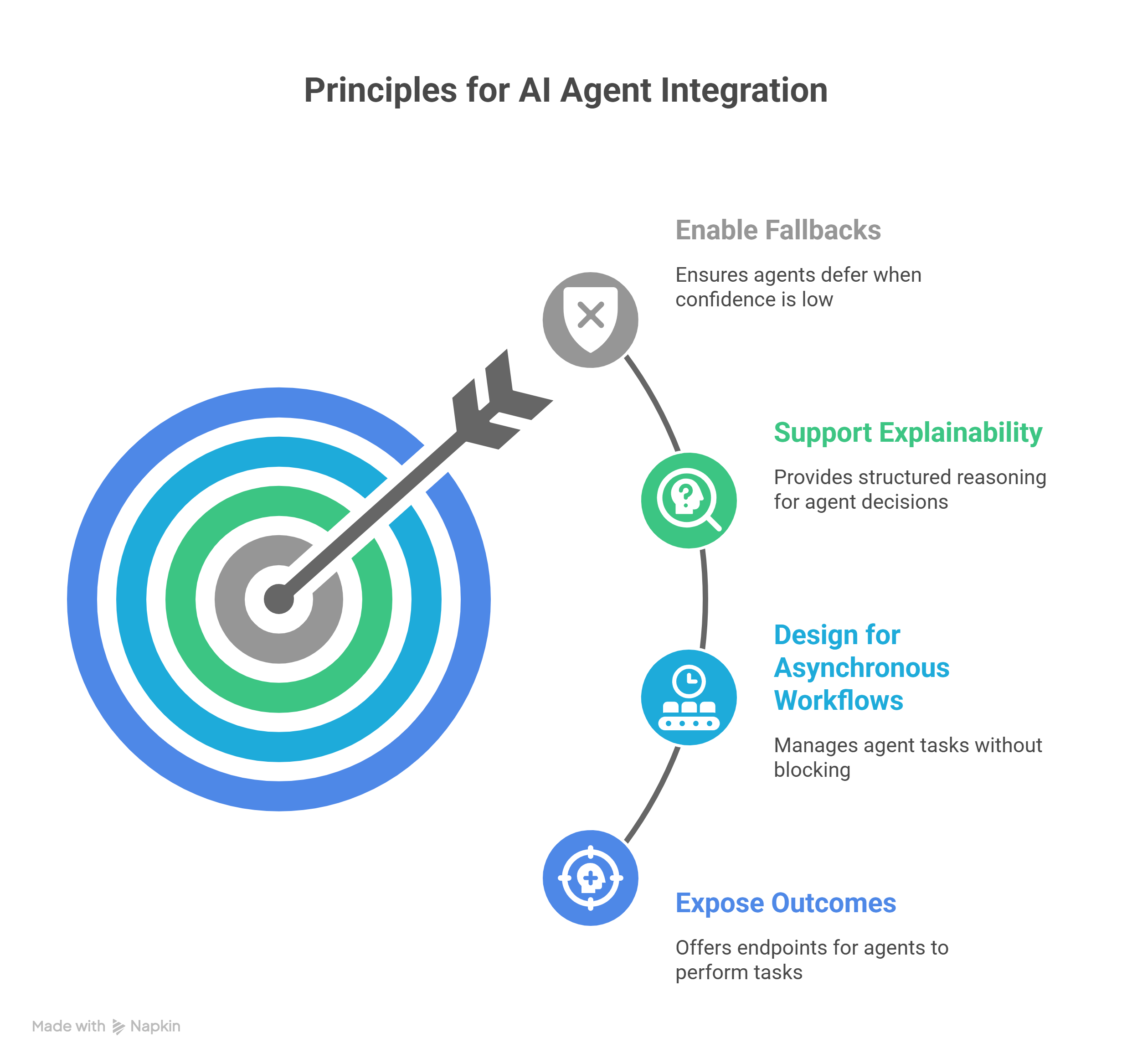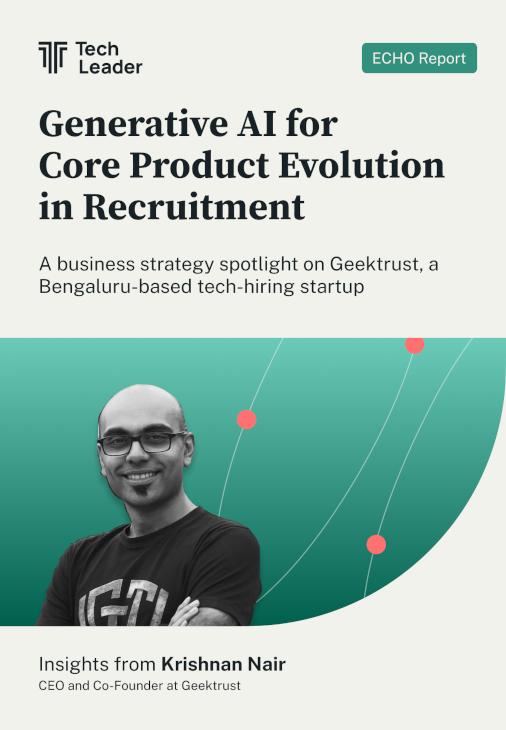Summary
AI Agents are redefining how work gets done. In this TechLeader article, Jarrod Anderson, CAIO and COO at SYRV.AI, explains why websites are becoming obsolete, how infrastructure must evolve for autonomous workflows, and what enterprise leaders need to build for trust, explainability, and agent-to-agent collaboration. If your systems still rely on human clicks, you’re already behind. This is your blueprint for designing enterprise software in the agent-native era.
For years, enterprise systems have been designed around static interfaces like forms, menus, and dashboards. The assumption was simple: a user sits down, logs in, and navigates toward an outcome.
That model is breaking down and doesn’t work like it used to anymore.
Jarrod Anderson, Chief AI Officer and Chief Operating Officer at SYRV.AI, believes that alongside changing workflows, AI agents are also restructuring how work gets initiated, executed, and delivered.
“We’re not just tweaking existing systems—we’re completely redefining both back-end operations and user interfaces.”
- Jarrod Anderson
TechLeader takes a closer look at why Anderson thinks AI Agents will replace websites and what this means for enterprise leaders dealing with the ever evolving AI landscape.
How AI Agents Are Replacing Traditional Interfaces
Anderson believes that websites will soon be replaced by agent technology.
“Web pages may no longer be needed. Everybody’s going to interact through agent technology… like chat. You no longer go into websites.”
- Jarrod Anderson
It’s not that websites will vanish, but their role will shrink. Instead of navigating menus, users will describe what they want. The agent will interpret, plan, and execute the task. If it needs clarification, it will ask. If it needs tools, it will invoke them. If the task is complete, it will confirm.
This marks a shift from navigation to delegation. The logic of interaction changes and so does the role of design. Instead of shaping paths, designers will shape context, trust, and clarity of intent.
Why Enterprise Infrastructure Must Evolve
The impact will not be limited to the front-end. Anderson believes this will force us to rethink of how systems are structured.
“Agents won’t just handle isolated tasks. They’ll be working together—forming these incredible networks of specialized helpers that can tackle complex challenges.”
- Jarrod Anderson
Today’s software expects a user to be present. The architecture assumes a session begins with input and ends with output. The introduction of agents breaks that framing making execution more asynchronous where inputs may come from other agents and outputs may trigger follow-on actions without ever involving a human.
Most enterprise stacks weren’t built for this. They were built for people clicking through screens. Teams will have to rethink how applications define access, permissions, and control because they’ll be building for agents acting on users’ behalf.
How AI Agents Are Changing the Structure of the Internet
Anderson doesn’t see the shift doesn’t stopping at the enterprise boundary.
“In 2023, bots accounted for half of all internet traffic… and that’s expected to increase to 90% of all web interactions.”
- Jarrod Anderson
The internet is already less human than it looks. Bots crawl, index, click, and transact. Agents will take this a step further: they’ll retrieve, compare, negotiate, and summarize. Instead of browsing, users will delegate.
That has implications far beyond convenience. Marketing, SEO, and personalization all presume human visitors. But agent behaviour differs. They don’t browse or get distracted, or care about branding. What stands out is structure, clarity, and access to function.
Anderson says companies will need to ask whether their content and systems are legible to machines. And if the answer is no, they’ll be ignored.
Why AI Agents Require Built-in Trust
Agents are all about delegation, but delegation comes with risk. That’s why Anderson stresses on the mechanics of trust.
He points to Scheduler AI as an example. It schedules meetings, but it does more than check availability. It engages in multi-turn email threads, qualifies participants, and adjusts when plans change. It does all this autonomously.
“It introduces itself. It’s transparent about being an AI… and that kind of clarity is crucial for building trust with users.”
- Jarrod Anderson
Anderson reiterates that trust is built through behavior: disclosing identity, showing its work, responding to feedback, and correcting itself.
Enterprise UX will need to account for this. If an agent is acting on behalf of the company—or the user—it must be auditable and interruptible. It must know when to escalate and when to pause.
What Legal Use Cases Reveal About AI Agents in Practice
Anderson isn’t speculating. He uses sectors where this transition is already underway to explain how these changes are taking place in real time.
Harvey, an agent used inside law firms, is already automating 75% of routine legal tasks: reviewing contracts, suggesting language, surfacing risk—all with minimal human touchpoints.
“That’s three-quarters of the work that traditionally requires hours of attorneys’ time," he says.
Law is an edge case and if agents can gain trust in high-stakes, regulated environments, they can operate anywhere. But to do this, they must understand the task, adapt to new data, and document their decisions.
That standard will apply across verticals: finance, healthcare, supply chain as delegation is only sustainable when the agent’s behavior is clear, consistent, and correctable.
How to Rethink UX Design for AI Agents
Instead of starting with asking what interface to build, design teams should ask whether one is needed. Anderson’s advice is simple: assume the agent is the userhe and then work backward. That changes the fundamentals:
Navigation becomes intent recognition: Can the system parse the goal, not just click paths?
Forms become APIs: Can inputs be submitted in structured, machine-readable ways?
UIs become side channels: Can the system operate with or without someone watching?
Anderson reiterates that this goes beyond building “chat interfaces.” It’s about making functionality agent-accessible and if your system only works when a user is present, it won’t scale into this model.
How Enterprise Systems Should Respond to AI Agents
AI Agents aren't a thing of the future. They are already being deployed by enterprises globally. Anderson breaks down the four principles which systems need to build around to take on this change:
Expose outcomes, not just data. Don’t offer users a form. Offer agents an endpoint that does the work.
Design for asynchronous workflows. Agents don’t wait. Systems need to queue, resolve, and report—without blocking.
Support explainability. Every decision an agent makes should be traceable. Logs aren’t enough. Structured reasoning is needed.
Enable fallbacks. When confidence drops, agents should defer—not guess.

Why AI Agents Are Already Reshaping Enterprise Workflows
Anderson is careful not to position this as a distant trend. He sees it taking shape now—in market activity, tooling maturity, and organizational demand.
“We’re moving toward a future where AI agents won’t just handle isolated tasks. They’ll be working together… forming networks of specialized helpers that tackle complex challenges.”
- Jarrod Anderson
Enterprise workflows are increasingly composable. Procurement systems call finance systems and CRM tools talk to onboarding tools. This is already the foundation for multi-agent collaboration. What changes now is the control layer and how tasks get initiated, managed, and closed.
Although things are changing, Anderson doesn’t suggest abandoning current systems. But he makes a strong case that the companies that win won’t be the ones who just redesign their UI, rather the ones that quietly make their systems usable by autonomous actors.
Final Note
“It’s not about rushing to implement AI agents everywhere, but about making strategic, responsible, and ethical choices regarding where and how to deploy them.”
- Jarrod Anderson
That principle of strategic and responsible adoption frames the real work ahead. Not every interface needs to disappear and not ever task can be delegated. But the default posture should change. If a user can describe the outcome, the system should find a way to deliver it.
This shift represents a move from interaction to intent, forms to functions and from software we use to systems that act.
At TechLeader, we recognize what’s at stake for enterprise leaders making calls on AI. That’s why we’ve built a targeted content ecosystem designed for decision-makers, engineers, and practitioners working at the forefront of generative and enterprise AI.
- Echo Reports: Unfiltered, industry-specific in-depth research.
- TechLeader Voices: Interviews with leading experts who break down everything from the complexities of being a tech leader to navigating the ever-evolving AI landscape.
- TechLeader Events: Be a part of the conversation and meet people building the future.
Subscribe to our free newsletter TechLeader Voices to stay sharp on the moves that matter in enterprise tech.
Check out our latest issue where Sidney Madison Prescott, former Global Head of Intelligent Automation at Spotify, talks about digtal transformation, taking people dynamics seriously, and how to optimize KPIs. PLUS: The UN's AI Hub in Rome.
%20(1).png)



.svg)







.JPG)
.svg)